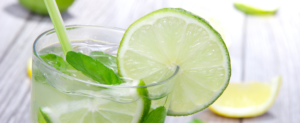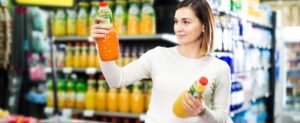You either hate it or you love it. The pumpkin spice craze has returned for another season, and beverage manufacturers are again reaping the cozy profits and warm success of this fall flavor favorite.
It’s not surprising that many new beverage categories are trying for a slice of this 600-million-dollar pumpkin pie. Pumpkin spice has popped up recently in a whole list of new drink categories, including specialty sodas, cold brews, protein shakes, plant-based creamers, and even non-alcoholic beers.
Where did it all start? At first, quietly at home around the dinner table. For centuries, bakers had been adding a mixture of cinnamon, nutmeg, cloves, ginger, allspice to boost the flavor of their pumpkins and squash. But it was McCormick who first saw a convenience and profit of providing bakers with these spices blended into one, and their pumpkin pie spice hit grocery store shelves in 1934.
You know the rest: In 2003, Starbucks introduced the Pumpkin Spice Latte: coffee mixed with fall flavors, steamed milk, and espresso, topped with a little whipped cream and pumpkin pie spice. What was just an experiment in seasonal flavors at the time was so wildly successful that many began ordering the drink by its simpler acronym: PSL.
Businesses tried for their share of Starbucks’ success, adding the spice to coffee creamers, cereals, baked goods, and even products bordering on the ridiculous: hand soap, dog treats, and beef jerky. In less than two decades, pumpkin spice has become a more than 600 million dollars industry (some argue “billion”), and that number isn’t expected to stop climbing any time soon.
As scientists, we’re not only interested in what makes up a flavor profile as appealing as pumpkin spice, and where that flavor is popping up, but we also study why the flavor has so much appeal to consumers. Why are we all so obsessed with pumpkin spice?
Perception researchers at John Hopkins University share the science behind the craze. It’s not the taste of pumpkin spice that makes consumers flock, it’s the smell. When we smell that familiar blend of cinnamon, nutmeg, and ginger, it triggers memories.
Smells tap memories more powerfully than any of the other senses, and for many of us, fall memories are the sweetest. Take one sniff of that familiar fall pumpkin scent, and you’re brought back to cozy memories of childhood: jumping in leaves, coming inside for warm drinks, Thanksgiving reunions, and family traditions of pumpkin carving or trick-or-treating. The pumpkin spice scent draws out consumers’ nostalgia, and when a flavor can evoke emotion, it’s a powerful factor in driving consumer behavior.
If nostalgia is the first factor, a second factor might be that “absence makes the heart grow fonder.” Pumpkin spice flavor is only around a few months a year, and its limited availability drives consumers to act now before it’s gone. The fact that pumpkin spice won’t be around again for another year is a strong draw on consumer purchasing choices.
Are you a beverage developer? It’s worth considering how a seasonal or limited-availability flavor might lead your beverage to success. How do consumer memory and emotion add value or lack thereof to the product you’re launching? And it’s not too basic to say that smell is a powerful factor to test and test again when developing your beverage for consumers with rich histories and memories that will drive their purchasing decisions.
Ready to get started? WiseBev can help! Let’s chat.







